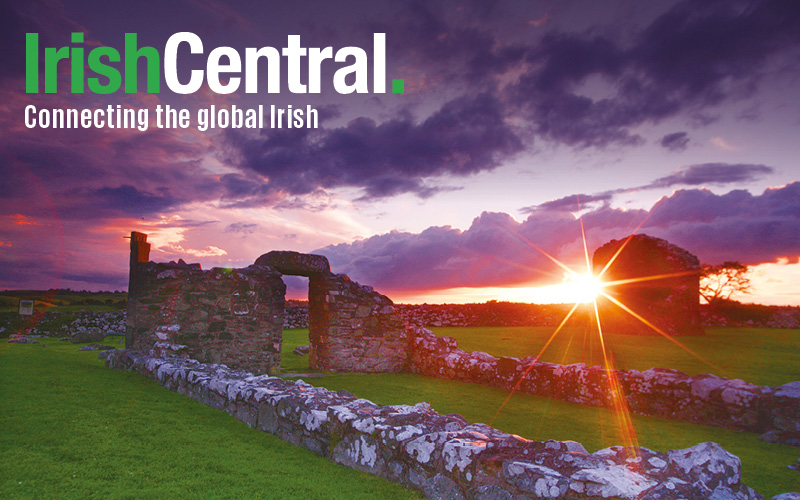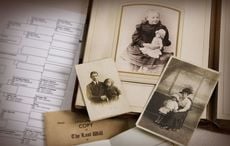Findmypast is working in partnership with IrishCentral to share fascinating insights into your Irish ancestors. Click here to get a special half price subscription, and discover your Irish roots today!
The importance of burial with the kin-group
Once the religious wars of the 17th Century ended, one of the few places in Irish society where there was no sectarian divide was the graveyard. Most graveyards accepted people of every denomination for burial. In part this was because in the 17th Century the Established Church, the Anglican Church of Ireland, took over the pre-Reformation cathedrals, churches and burial grounds.
For the Irish population, no matter what church they attended on a Sunday, the most important thing was to be buried with their own kindred. Religious divisions that were so important in life, were finally set aside in the graveyard. The main exception to this rule were the Quakers, who always kept their own separate burial grounds. There are also a small but significant number of 'denominational' burial grounds around Ireland, but these tend to be smaller graveyards that have long since fallen into disuse precisely because of changing rural populations and the decline of congregations.
Returning home for burial
Many of those who died away from home were usually brought back for burial. In general however, this tradition is only evident where the documentary records have survived, so that we have most evidence about the prosperous middle-classes, gentry and aristocracy. From the second half of the 19th Century, there's a greater survival of Irish records, and we can see that this tradition was also observed by the ordinary working people.
A frequent problem which most researchers face at one time or another, is that although the documentary evidence clearly shows that the family remained in a locality, there are no burial records or gravestones for them. Experience has shown that what has usually happened is that earlier generations of the family originated outside of the district. As family members die, they are brought some distance from their usual place of residence, to the place where the family may have originated a generation or more earlier. Frequently, you will find generations of a family buried in an extended family plot. This emphasises the notion that in death, what the Irish wanted was to be buried amongst their own kindred.
Burial of suicides and non-baptised children
The custom of burying people with their own kin was so strong, that it was only interrupted in cases of death by suicide or (exclusive to the Catholic population) by the death of unbaptised children and stillbirths. The burials of children not baptised were never recorded in official or institutional records, but occasionally records survive amongst family papers, in private letters and diaries, or in stories passed down through the family.
Infants that died before they could be baptised were sometimes buried outside the walls of the graveyard or on grass-verges along a road. More commonly, unbaptised children and those that died by their own hand were buried in kileens, i.e. an older graveyard in the locality that had long fallen out of use.
At the root of this tradition, was the belief that the souls of unbaptised children and of suicides, were not at rest, and might be taken by the fairies (daoine sídhe).
In Irish culture, the sídhe were wild, malignant spirits, who preyed on humans. The strength of these folk beliefs should not be dismissed. In remote rural communities, belief in the fairy folk persisted into the 20th Century. In 1895 Bridget Cleary was murdered by her husband while her father and brothers stood by, in the apparent belief that Bridget had been swapped for a fairy changeling. And as late as the 1930s in Ireland, there was one known case of infanticide where the child was killed in the belief that the fairies had stolen the baby, and left a changeling in its place.
Burial registers and gravestone inscriptions
As a rule of thumb in the 18th and 19th Centuries, Catholic parishes did not keep burial registers. All other denominations in Ireland maintained burial registers and these records can provide excellent information unavailable elsewhere. Burial registers for Church of Ireland parishes in Dublin city for example, record huge numbers of catholic burials. Burial records should always be looked at, alongside gravestone inscriptions.
In the last few decades local history societies and government training schemes have taken transcripts of gravestones from many of their local burial grounds. Many of these surveys have been published, and are available online. For example Brian Cantwell's monumental work, Memorials of the Dead, which covers counties Wicklow and Wexford, is now available on Findmypast.
But if you'd prefer to get out in the fresh air to do your graveyard research, a good tip taken from archaeologist friends, is to bring white chalk. If you want to read an inscription that appears illegible due to time and weathering, chalk over the carved words to bring the inscription into relief. Failing chalk, a handful of wet-grass rubbed over the headstone, will also reveal the carving. My father showed me this ruse one afternoon, to reveal the grave of Napper Tandy of 1798 fame, buried in Castlebellingham churchyard.
For more stories on tracing your Irish heritage from Findmypast click here.




Comments